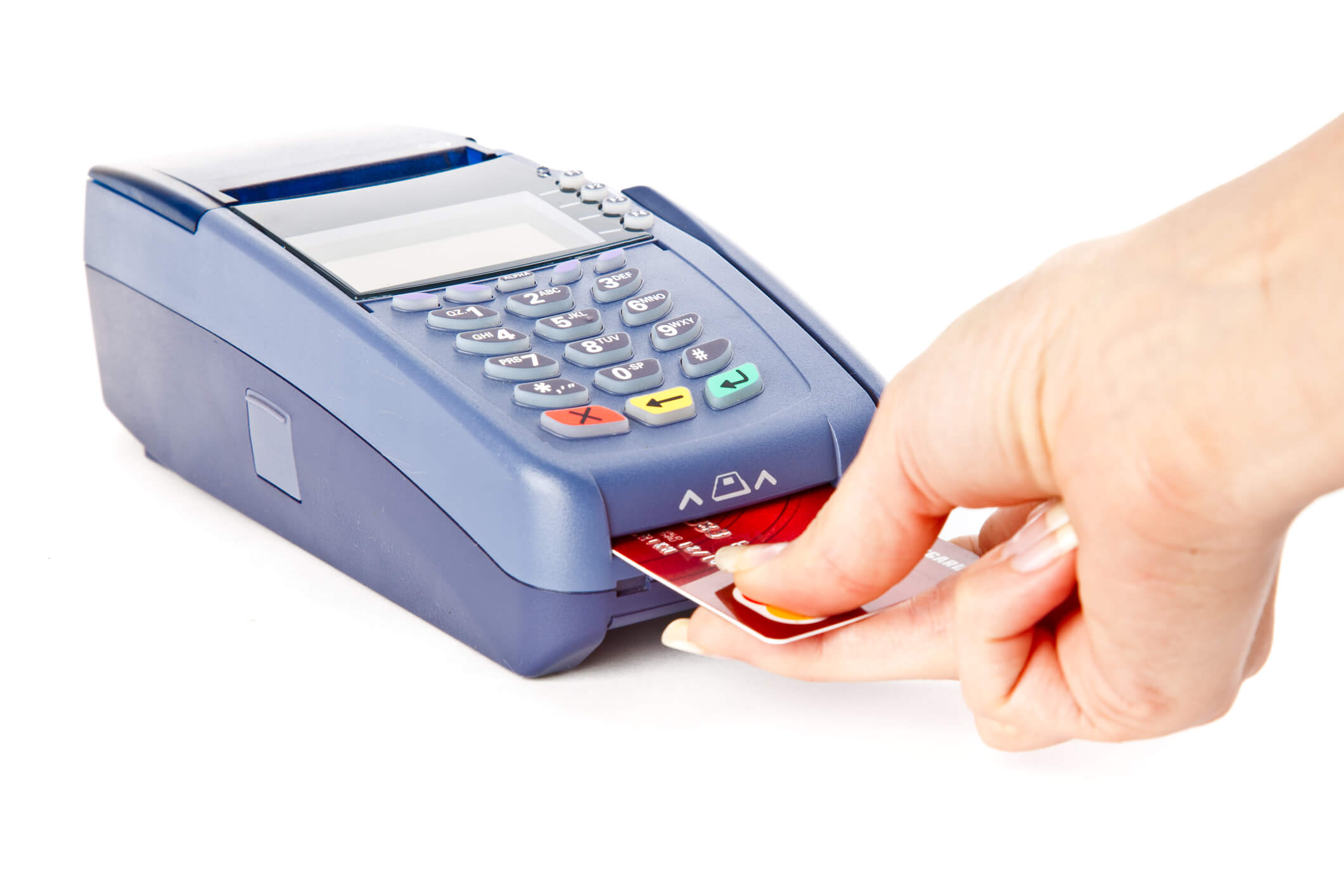
By alphacardprocess May 15, 2024
Payment processing is an essential component of any business, and the construction industry is no exception. In today’s digital age, integrating payment processing into construction management software has become increasingly important for streamlining operations, improving efficiency, and enhancing customer experience. This comprehensive guide will walk you through the process of integrating payment processing into your construction management software, covering everything from understanding the benefits to ensuring security and compliance.
Understanding the Benefits of Integrating Payment Processing

Integrating payment processing into your construction management software offers numerous benefits for both contractors and clients. One of the key advantages is the ability to streamline the payment process, eliminating the need for manual data entry and reducing the risk of errors. By automating payment processing, contractors can save time and resources, allowing them to focus on other critical aspects of their projects.
Furthermore, integrated payment processing provides real-time visibility into financial transactions, allowing contractors to track and manage payments more efficiently. This visibility enables better cash flow management, as contractors can easily identify outstanding payments and take appropriate actions to ensure timely collection. Additionally, integrated payment processing can help improve cash flow forecasting, enabling contractors to make more informed financial decisions.
Another significant benefit of integrating payment processing is the enhanced customer experience it offers. Clients can make payments conveniently and securely through various payment methods, such as credit cards, electronic funds transfers (EFTs), or mobile payments. This flexibility not only improves customer satisfaction but also increases the likelihood of prompt payments, reducing the risk of late or missed payments.
Key Considerations for Choosing a Payment Processing Solution

When selecting a payment processing solution for your construction management software, several key considerations should be taken into account. Firstly, it is crucial to choose a solution that seamlessly integrates with your existing software. Compatibility is essential to ensure a smooth and efficient payment process without the need for manual data entry or duplicate systems.
Security is another critical factor to consider when choosing a payment processing solution. Construction projects involve significant financial transactions, and ensuring the security of sensitive payment information is paramount. Look for a payment processing solution that complies with industry standards, such as Payment Card Industry Data Security Standard (PCI DSS) compliance, to protect both your business and your clients’ data.
Cost is also an important consideration. Evaluate the pricing structure of different payment processing solutions, including transaction fees, monthly fees, and any additional charges. It is essential to choose a solution that offers competitive rates while providing the necessary features and functionality for your business.
Step-by-Step Guide to Integrating Payment Processing into Your Construction Management Software
Integrating payment processing into your construction management software may seem like a complex task, but with the right approach, it can be a seamless process. Follow this step-by-step guide to ensure a successful integration:
- Assess your current payment process: Before integrating payment processing, evaluate your existing payment process to identify pain points and areas for improvement. This assessment will help you determine the specific features and functionality you need from a payment processing solution.
- Research payment processing solutions: Conduct thorough research to identify payment processing solutions that meet your requirements. Consider factors such as compatibility, security, cost, and customer support. Read reviews and testimonials from other construction professionals to gain insights into the effectiveness and reliability of different solutions.
- Choose a payment processing solution: Based on your research, select a payment processing solution that best aligns with your needs. Contact the provider to discuss your requirements and ensure that their solution can integrate seamlessly with your construction management software.
- Set up your payment processing account: Once you have chosen a payment processing solution, sign up for an account and complete the necessary paperwork. Provide any required documentation, such as proof of business registration and banking information.
- Configure the integration: Work with your payment processing provider to configure the integration between their solution and your construction management software. This may involve setting up API connections or installing plugins or extensions.
- Test the integration: Before going live, thoroughly test the integration to ensure that payments are processed correctly and data is accurately synchronized between your construction management software and the payment processing solution. Conduct test transactions using different payment methods to verify the functionality and reliability of the integration.
- Train your team: Once the integration is successfully tested, train your team on how to use the integrated payment processing system. Provide clear instructions and guidelines to ensure that everyone understands the new process and can effectively utilize the system.
- Communicate with clients: Inform your clients about the new payment process and provide them with clear instructions on how to make payments. Offer support and assistance to address any questions or concerns they may have.
- Monitor and optimize: Continuously monitor the payment process and gather feedback from your team and clients. Identify any issues or areas for improvement and work with your payment processing provider to address them. Regularly review transaction data and analytics to gain insights into payment trends and optimize your payment processing strategy.
- Provide ongoing support: Offer ongoing support to your team and clients to ensure a smooth payment process. Address any issues or inquiries promptly and proactively communicate any updates or changes to the payment process.
Exploring Different Payment Methods for Construction Projects
When integrating payment processing into your construction management software, it is essential to consider the different payment methods available for construction projects. Offering a variety of payment options can improve customer satisfaction and increase the likelihood of prompt payments. Here are some common payment methods used in the construction industry:
- Credit cards: Accepting credit card payments provides convenience for clients and allows for quick and secure transactions. Contractors can choose to process credit card payments manually or set up recurring payments for ongoing projects.
- Electronic funds transfers (EFTs): EFTs enable clients to transfer funds directly from their bank accounts to the contractor’s account. This method eliminates the need for physical checks and reduces the risk of payment delays.
- Mobile payments: With the increasing popularity of mobile payment apps, such as Apple Pay and Google Pay, offering mobile payment options can enhance the customer experience. Clients can make payments using their smartphones, providing a convenient and secure payment method.
- Automated Clearing House (ACH) payments: ACH payments allow for electronic transfers between bank accounts. This method is commonly used for recurring payments, such as monthly invoices or installment payments.
- Online payment portals: Setting up an online payment portal allows clients to make payments directly through your construction management software. This method provides a seamless and integrated payment experience, reducing the need for manual data entry.
- Checks: Although less common in today’s digital age, some clients may still prefer to pay by check. Integrating check payment processing into your construction management software can streamline the payment process and reduce the risk of errors.
Ensuring Security and Compliance in Payment Processing
Security and compliance are critical considerations when integrating payment processing into your construction management software. Construction projects involve significant financial transactions, and ensuring the security of sensitive payment information is paramount. Here are some key measures to ensure security and compliance:
- Choose a PCI DSS compliant solution: Payment Card Industry Data Security Standard (PCI DSS) compliance is a set of security standards designed to protect cardholder data. When selecting a payment processing solution, ensure that it is PCI DSS compliant to safeguard both your business and your clients’ data.
- Implement encryption and tokenization: Encryption and tokenization are essential security measures that protect sensitive payment information. Encryption converts data into an unreadable format, while tokenization replaces sensitive data with unique tokens. Implementing these measures ensures that payment data is securely transmitted and stored.
- Use secure payment gateways: A payment gateway is a secure service that authorizes and processes payment transactions. Choose a payment processing solution that utilizes secure payment gateways to protect payment data during transmission.
- Implement two-factor authentication: Two-factor authentication adds an extra layer of security by requiring users to provide two forms of identification, such as a password and a unique code sent to their mobile device. Implementing two-factor authentication for accessing payment processing systems enhances security and reduces the risk of unauthorized access.
- Regularly update software and systems: Keep your construction management software and payment processing systems up to date with the latest security patches and updates. Regularly update antivirus software and firewall settings to protect against emerging threats.
- Train employees on security best practices: Educate your employees on security best practices, such as creating strong passwords, recognizing phishing attempts, and securely handling payment information. Regularly conduct training sessions to reinforce security protocols and ensure that everyone understands their role in maintaining security.
Streamlining Invoicing and Billing with Integrated Payment Processing
Integrating payment processing into your construction management software can significantly streamline the invoicing and billing process. By automating these processes, contractors can save time, reduce errors, and improve cash flow management. Here are some ways integrated payment processing can streamline invoicing and billing:
- Automated invoice generation: With integrated payment processing, invoices can be generated automatically based on project milestones, completed tasks, or predefined billing schedules. This automation eliminates the need for manual invoice creation, saving time and reducing the risk of errors.
- Real-time invoice tracking: Integrated payment processing provides real-time visibility into invoice status, allowing contractors to track and monitor payments more efficiently. Contractors can easily identify outstanding invoices, track payment due dates, and take appropriate actions to ensure timely collection.
- Automatic payment reminders: Integrated payment processing systems can send automated payment reminders to clients, reducing the need for manual follow-ups. These reminders can be customized based on payment terms and due dates, ensuring that clients are notified promptly and reducing the risk of late or missed payments.
- Online payment portals: Integrating an online payment portal into your construction management software allows clients to make payments directly through the system. This eliminates the need for manual data entry and provides a seamless payment experience for clients.
- Recurring billing: For ongoing projects or services, integrated payment processing can automate recurring billing. Contractors can set up recurring payment schedules, ensuring that clients are billed consistently and reducing the administrative burden of manual invoicing.
- Integration with accounting software: Integrated payment processing can be seamlessly integrated with accounting software, allowing for automatic synchronization of payment data. This integration eliminates the need for manual data entry and ensures accurate financial records.
Tracking and Managing Payments in Construction Management Software
Tracking and managing payments is a crucial aspect of construction management. Integrated payment processing provides real-time visibility into financial transactions, enabling contractors to track and manage payments more efficiently. Here are some ways integrated payment processing can help track and manage payments:
- Real-time payment tracking: Integrated payment processing systems provide real-time visibility into payment status, allowing contractors to track payments as they are processed. Contractors can easily identify completed payments, pending payments, and any payment issues that need to be addressed.
- Automatic payment reconciliation: Integrated payment processing can automatically reconcile payments with invoices, ensuring accurate and up-to-date financial records. This automation eliminates the need for manual reconciliation, saving time and reducing the risk of errors.
- Payment analytics and reporting: Integrated payment processing systems often provide analytics and reporting features that allow contractors to gain insights into payment trends and patterns. Contractors can analyze payment data to identify any issues or trends that may require attention, such as late payments or payment delays.
- Cash flow management: Integrated payment processing enables better cash flow management by providing real-time visibility into incoming payments. Contractors can easily identify outstanding payments and take appropriate actions to ensure timely collection. This visibility also allows for more accurate cash flow forecasting, enabling contractors to make informed financial decisions.
- Automated payment allocation: Integrated payment processing systems can automatically allocate payments to specific projects or invoices, reducing the administrative burden of manual payment allocation. This automation ensures that payments are accurately recorded and allocated, improving financial accuracy and efficiency.
- Payment dispute resolution: In the event of payment disputes or discrepancies, integrated payment processing systems can provide a centralized platform for communication and resolution. Contractors can easily access payment details, invoices, and any relevant documentation to address payment disputes promptly and efficiently.
Enhancing Customer Experience through Integrated Payment Processing
Integrated payment processing not only streamlines internal processes but also enhances the customer experience. Offering convenient and secure payment options can improve customer satisfaction and increase the likelihood of prompt payments. Here are some ways integrated payment processing can enhance the customer experience:
- Convenient payment options: Integrated payment processing allows clients to make payments conveniently through various payment methods, such as credit cards, EFTs, or mobile payments. Offering a variety of payment options accommodates clients’ preferences and provides a seamless payment experience.
- Online payment portals: Integrating an online payment portal into your construction management software allows clients to make payments directly through the system. This eliminates the need for clients to visit a physical location or send checks, providing a convenient and time-saving payment method.
- Secure payment processing: Integrated payment processing ensures the security of sensitive payment information, providing peace of mind for clients. By complying with industry standards, such as PCI DSS, contractors can demonstrate their commitment to protecting client data and build trust.
- Automated payment reminders: Integrated payment processing systems can send automated payment reminders to clients, reducing the need for manual follow-ups. These reminders can be customized based on payment terms and due dates, ensuring that clients are notified promptly and reducing the risk of late or missed payments.
- Transparent payment tracking: Integrated payment processing provides real-time visibility into payment status, allowing clients to track their payments as they are processed. This transparency builds trust and confidence, as clients can easily verify payment details and ensure that their payments are being processed correctly.
- Efficient dispute resolution: In the event of payment disputes or discrepancies, integrated payment processing systems provide a centralized platform for communication and resolution. Clients can easily access payment details, invoices, and any relevant documentation to address payment disputes promptly and efficiently.
Conclusion
Integrating payment processing into your construction management software offers numerous benefits for contractors and clients alike. By streamlining the payment process, contractors can save time, reduce errors, and improve cash flow management. Integrated payment processing provides real-time visibility into financial transactions, enabling contractors to track and manage payments more efficiently. Furthermore, offering convenient and secure payment options enhances the customer experience, increasing customer satisfaction and the likelihood of prompt payments.
By integrating payment processing into your construction management software, you can maximize efficiency and profitability, ultimately contributing to the success of your construction business. Embrace the digital transformation and leverage the power of integrated payment processing to streamline operations, improve cash flow management, and enhance the customer